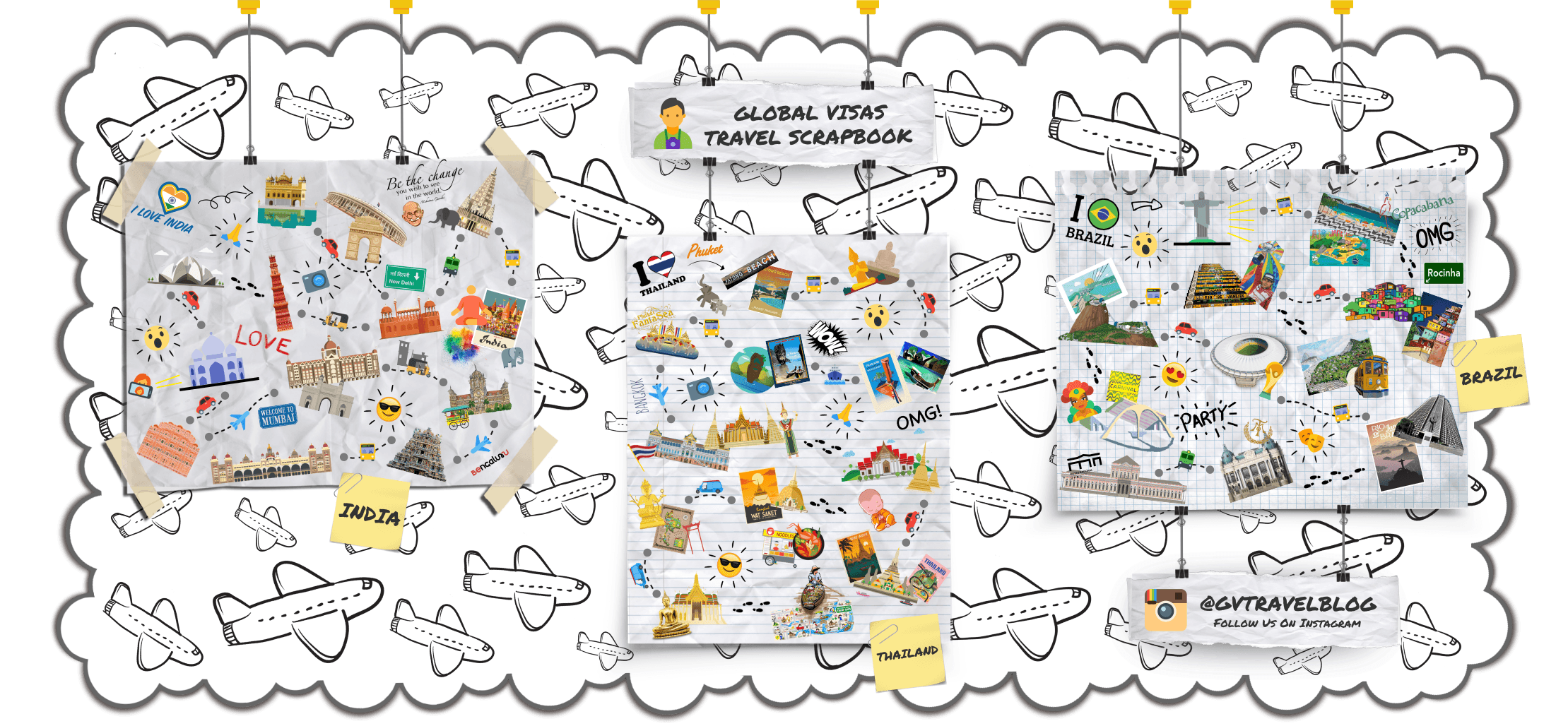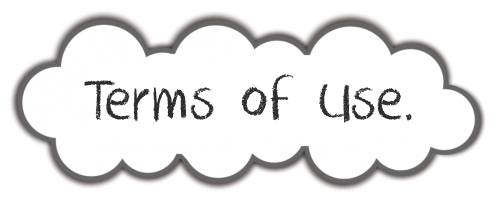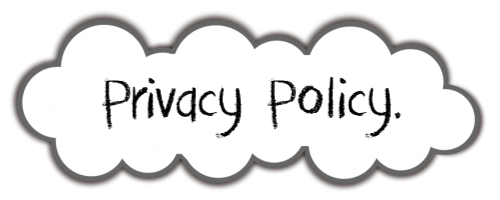BY BUS:
Buses are a relatively cheap and environmentally friendly way to get around New Zealand. Services are usually only once a day, even between major towns. Most roads in New Zealand are quite narrow and winding (when compared to the highways of the USA), and travelling a long distance in a bus can be a safe and relaxing way to travel compared with driving yourself. Booking in advance can get you great bargains on some lines.
- Flying Kiwi Adventures. Trips range from 3 to 27 days and cover both main islands. The tours focus on enjoying outdoor beauty and excitement with numerous hiking, cycling and activity options. There are also options to take extended breaks in your favourite places. Discounts are available for holders of YHA, VIP, ISIC and NOMADs cards.
- New Zealand’s national coach company, with services connecting over 600 destinations nationwide. InterCity Group has voluntarily adopted European Emission standards across its fleet of modern coaches. Operates the InterCity and Newmans lines, and a fleet of modern vessels and coaches for GreatSights New Zealand, Fullers GreatSights Bay of Islands and awesomeNZ. InterCity Group is part of Landcare Research’s carboNZero programme, which has a core focus on working to reduce harmful emissions at source. Tickets can be purchased from the InterCity ticket counters at bus stations or i-SITE information centres and a discount is given to students or youth-hostel membership card holders (e.g. BBH, YHA, Nomads, ISIC). Fares start from $1 (plus a booking fee) on all InterCity’s national services and they’ve even been known to give away free seats at various times of the year. A limited number of heavily discounted “Cheap-as-Seats” for travel that week are released via the company’s Facebook and Twitter feeds every Monday. Online fares are often sold at a cheaper rate.
- Travelpass. A pass offered by InterCity that brings together an extensive range of “hop on and off” fixed itinerary passes, based on the most popular touring routes throughout New Zealand. National passes include the Interislander ferry and a scenic boat cruise in Milford Sound. Passes are valid for 1 year.
- Flexi-Pass. Utilising the combined national networks of InterCity, Newmans and GreatSights, Flexi-Pass is sold in blocks of time, just like a prepaid phone card, and enables the holder to travel anywhere on the company’s network. Passes start at 15 hr, which is enough to travel from Auckland to Wellington in the North Island. Flexi-Pass hours can also be used to travel on the Interislander ferry and on Fullers GreatSights Bay of Islands Dolphin Watching cruises and tours to Cape Brett and the famous “Hole in the Rock”. Passes can also be sold on to third parties and are valid for 1 year.
- Atomic Shuttles operate a no-frills shuttle service in parts of the South Island.
- Knight Rider. Transport between Christchurch and Dunedin daily.
- West Coast Shuttle. Daily transport from Greymouth to Christchurch (via Arthur’s Pass) and return at more affordable prices than some of the larger firms.
- Backpacker buses – KiwiExperience Backpacker Bus and Stray Travel Bus offer bus trips around New Zealand where you can get on and off as you please after purchasing a pass.
- Skip Bus operates express bus services across major cities in the North Island, like Auckland, Whangarei, Hamilton, Tauranga, Rotorua, Wellington.
- Naked Bus and Mana Bus ceased operation in July 2018.
BY PLANE:
Domestic flights in New Zealand can be expensive; some domestic flights can cost as much as a flight to Australia. However, flying often works out cheaper than driving or taking a train, especially when crossing between the North and South Islands.
Airlines operate an electronic ticket system. You can book on-line, by telephone, or through a travel agent. Photo ID will be needed for travel.
Check-in times are usually at least 30 minutes prior to flight departure. Cabin baggage and personal scanning are routinely conducted for services from the major airports that have jet landings.
- Air New Zealand has the most extensive domestic network, serving most cities over 20,000 people, with jet services between main centres and smaller turboprop aircraft elsewhere. Free baggage allowance is 1 piece of baggage weighing 23 kg on Grabaseat+Bag, Saver and Flexi fares; standard Grabaseat fares don’t include checked baggage. All fares include 7 kg carry-on baggage.
- Jetstar is a budget no-frills carrier that flies to Auckland, Christchurch, Dunedin, Napier, Nelson, New Plymouth, Palmerston North, Queenstown and Wellington. Don’t be late for check-in – they are very strict about check-in close times.
Auckland, Christchurch, Queenstown and Wellington airports have timetabled buses to the airport. Regional airports generally have only on-demand shuttle services and taxis.
BY MOTOR VEHICLE:
You can reach most of New Zealand’s sights in a two-wheel-drive car, motorcycle or even a small camper van. While public transport is usable in the cities of Auckland and Wellington, a car is almost essential to get around anywhere else.
Traffic drives on the left in New Zealand. The State Highway network connects major cities and destinations within the two main islands, and are indicated by a number inside a red shield. Motorways and expressways are generally only found near major cities, with most intercity driving done on undivided highways with one lane in each direction and limited overtaking opportunities. Be prepared to get caught behind slow-moving vehicles, and expect drivers behind you to become impatient if you drive slowly without a reason. If you are driving slowly and traffic builds up behind you, find a safe place to pull over and let them pass.
You can legally drive for up to 12 months if you are at least 18 years old and have a current full driving licence from your home country. It must be in English or you must have an approved English translation such as an International Driving Permit (IDP) to accompany it. You must carry your licence at all times when driving. All drivers and passengers must wear a seat belt, and children must be seated in an approved child restraint until their 7th birthday. Talking or using a mobile phone while driving is illegal.
Speed limits are generally 50 km/h in urban areas, and 100 km/h in rural areas and on motorways. A select few motorways and expressways have 110 km/h limits. Heavy vehicles and towing vehicles have a blanket maximum limit of 90 km/h. Being caught 40 km/h or more over the posted limit will result in a 28-day roadside suspension and most likely an appearance in court on dangerous driving charges.
The blood alcohol limit in New Zealand is 0.05% (0.00% if aged under 20). A police officer can pull you over and ask you to undergo a breath alcohol screening test without reason. Refusing a breath screening test will usually result in arrest. Being caught more than 0.03% over the limit will result in an appearance in court, which will result in at least 6 months disqualification from driving and a hefty fine.
Some petrol stations in major towns and cities are open 24 hours, with most other manned petrol stations closing by 10PM. There are 24-hour unmanned petrol stations around the country, which accept national and international debit/credit cards with a PIN; very rarely do these sites accept cash. Petrol prices vary by region: $1.90-2.15/L for regular unleaded petrol, and $1.30-1.45/L for diesel as of February 2019 (unlike petrol, diesel is not taxed at the pump and therefore the price is lower).
Electric vehicles make up around 0.25% of the vehicle fleet (as of September 2018), and there is a rapidly expanding network of fast charging stations across the country.
Campervan:
A campervan/motorhome provides considerable freedom and allows you to set your own schedule for travel around New Zealand by combining accommodation and transport. These practical vehicles are often equipped with two or more beds, a kitchenette, a shower and a toilet. They are generally suited for 2-6 people depending on the size.
Motorhome/campervan rentals are available in both the North Island and South Island. Some rental companies offer one way rentals so you can start and finish your travel in different locations. A minimum rental period is generally 5 days but can be up to 10 days during the peak season (especially Christmas/New Year).
Motorcyle:
New Zealand is a motorbike rider’s dream country! Rentals of many makes of motorcycles are available throughout New Zealand. The South Island is the main attraction for a motorcyclist and motorcycle tours base most of their time here. Remember to bring your full motorcycle licence from your home country; a standard car licence is not suffice to ride a motorcycle in New Zealand.
Rental:
Car rental firms range from the familiar multi-national big brands through to small local car rental firms. The advantage of the big name rental firms is they can be found throughout New Zealand and offer the biggest and newest range of rental vehicles. The disadvantage is that generally they are the most expensive. Occasionally rental firms offer free rental in the direction from south to north due to the majority of tourists travelling in the opposite direction, creating a deficit of cars in the north.
At the other end of the scale are the small local operators who typically have older rental cars. Whilst you may not end up driving this year’s latest model the advantage is that the smaller car rental firms can be substantially cheaper, so leaving you more money to spend on the many exciting attractions New Zealand offers. Between these extremes you will find a wide range of NZ car rental firms catering to different needs and budgets.
Other things to note are that most car hire firms require you to be 21 or over, hold a full licence and it will help if you have an international licence too. New Zealand rental vehicles may come with either a manual (stick-shift) or an automatic transmission; if you can’t drive a manual, make sure to specify an automatic transmission vehicle in advance. If you have a licence from a non-English speaking country, you will be required to have an official translation of that document to rent a vehicle. If you don’t have one at the counter, some companies are able to refer you to a service at a cost of about $80 and a delay of 1 to 2 hours.
Some rental car companies do not allow their vehicles on the Cook Strait ferries between the North and South Island, or only allow them on if you promise to return them back to their originating island. If you do return a rental car on the wrong island, expect to be charged upwards of $500 to repatriate the vehicle. Most rental car companies will allow you to drop off a car at one terminal, travel on the ferry and pick up another car at the other terminal at no extra cost.
Self-drive holidays are a great way to travel around New Zealand as they offer independence, flexibility and opportunities to interact with the locals. A number of companies offer inclusive self-drive holidays with rental car & accommodation, pre-set itineraries or customised to suit your interests.
Purchase and sale:
If you want to have an extended holiday in New Zealand and you would prefer to have your own transport, it may be cheaper to buy a car or van and resell it just before leaving. If you use this method, travel across Cook Strait can be expensive. If purchasing a car for $500 or less it may be cheaper to buy and sell a car in each island separately. However, if you buy your car in Christchurch, tour the South island and then travel North to sell in Auckland, you can take advantage of the buyers market in Christchurch and the sellers market in Auckland and possibly even make a small profit. In addition to the usual ways to look for a car (newspapers, accommodation noticeboards, car markets etc.) New Zealand’s biggest on-line auction website Trademe have many listings. You can also try the backpackers car market where there are usually people selling their cars off cheaply. Car auctions can also be a suitable option if you are looking to buy a car. Turner’s Auctions have regular auctions and are based in many cities. Look out for “Repo” auctions, where the cars being sold are as a result of repossession. Should any previous ownership problems have existed, these will have been resolved before auction commences.
When you buy and sell a vehicle, you need to notify the New Zealand Transport Agency (NZTA) and (if you are buying) pay the appropriate fee. It is very important to notify the NZTA if you are selling since this limits your liability for any subsequent costs (overdue licence fees, speed camera tickets, etc.). Other obligations as a vehicle owner include paying the licence fees (“rego”) and having a current Warrant of Fitness (WoF). Diesel vehicles owners also have to pay Road User Charges (RUC) since diesel is not taxed at the pump. Third party insurance to cover your liability in an accident is not mandatory but is highly recommended. The Accident Compensation Corporation (ACC) automatically covers you for personal injuries in car accidents (see Stay healthy below for more information).
BY TRAIN:
Both Auckland and Wellington have commuter rail services. Auckland’s network is managed by Auckland Transport, and has four lines spreading from Britomart station in the city centre to Swanson in the west, Onehunga in the southwest, Papakura and Pukekohe in the south, and Manukau in the south-east; there is no rail to the North Shore or to eastern Auckland. Wellington’s network is managed by Metlink, and has four lines spreading north from Wellington station serving Wellington’s northern suburbs, Porirua, the Kapiti Coast (as far north as Waikanae), Lower Hutt and Upper Hutt. A fifth service, the Wairarapa Connection, travels several times daily to Masterton in the Wairarapa via Upper Hutt and the 8.8 km Rimutaka Tunnel.
Long distance passenger-rail services are slow and limited in New Zealand, and are largely used for tourism purposes rather than as actual practical travel options, with the bulk of New Zealand’s rail traffic being used for freight transport.
Inter-city passenger services are operated by KiwiRail Scenic Journeys, with just a few popular tourist services that pass through spectacular scenery and have a running commentary, panoramic windows and an open-air viewing carriage.
- Northern Explorer (replaced the Overlander) – a modern train that now operates 3 days a week all year. It heads south from Auckland to Wellington on Mondays, Thursdays and Saturdays and in the opposite direction on Tuesdays, Fridays and Sundays. This is reckoned by many to be one of the world’s most scenic rail journeys.
- Capital Connection – commuter service leaves from Palmerston North to Wellington in the morning, returning in the evening.
- Coastal Pacific – from Christchurch to Picton (via Kaikoura) and return daily. Travels along the rugged north-east coast of the South Island with terrific sea views. Meets the Picton–Wellington ferry. Oct–Apr only.
- TranzAlpine – from Christchurch to Greymouth and return daily. Classed as one of the world’s great train journeys, this trip crosses the South Island, passing through spectacular mountain scenery, some of which is inaccessible by road, and the 8.5 km Otira Tunnel. Many visitors disembark at Arthur’s Pass National Park and spend four hours exploring the mountains before catching the return train.
The online booking site maximises overseas revenue by only showing the cheapest fares when it detects that you are accessing it from a New Zealand IP address. You may be able to get these cheaper fares if you wait until you arrive or book by phone. Seating on the Capital Connection is on a first-come-first-served basis and cannot be booked in advance.
Trains run at low speed, no faster than 110 km/h and can drop to 50 km/h in the summer due to the lack of track maintenance following privatisation in the 1990s. Most New Zealanders prefer to drive or fly long distances, as train fares are comparatively expensive. However, if time is not an issue, going through New Zealand by train is well worth the price-tag as you get breathtaking views you wouldn’t get from a car and can wander around the train while someone else does all the driving – benefits no other mode of transportation offers.
All long distance trains have a dining car and you can pre-order your food and have a look at the menu online.
BY FERRY:
Between the North and South Islands:
There are two passenger and car ferry operators which cross Cook Strait between Wellington in the North Island and Picton in the South Island. The journey lasts 3.5 hours and there are several sailings daily. It is a spectacular and scenic trip through Wellington Harbour, Cook Strait and the Marlborough Sounds. However, the weather and seas in Cook Strait are frequently rough and unpredictable; sailings can be delayed or cancelled due to stormy weather, while others can quickly turn from a Mediterranean cruise into a spew-fest. Make sure you pack essentials for every possible weather situation in your carry-on luggage; you can’t return to your car once the ferry has left port.
The ferry terminal at Picton is close to the railway station, and the Coastal Pacific train connects with Interislander sailings.
It is essential to book vehicle crossings in advance. The busiest period is from late December to February. Foot passenger traffic is also heavy at this time, and it is advisable to book well in advance.
Check with your rental car company whether you can take your vehicle on the Cook Strait ferry: some do not allow their vehicles on the ferries but will happily allow you to drop off a car at one ferry terminal and pick up another car at the other terminal at no extra cost.
- Interislander, +64 4 498-3302, toll-free: 0800 802 802. Contact centre M–F 08:00–20:00, Sa–Su 08:00–18:00. Operates three ships: Aratere, Kaiarahi and Kaitaki.
- Bluebridge (Strait Shipping), +64 4 471-6188, toll-free: 0800 844 844. Contact centre 08:00-20:00 daily. Operates two ships: Straitsman and Strait Feronia
Other ferries:
Harbour ferries, for commuters, operate in Auckland and Wellington. A number of communities are served by boat, rather than road, while charter boats are available for expeditions in several places. There are regular sightseeing cruises in several tourist destinations, particularly in the Southern Lakes and Fiordland area.
BY BICYCLE:
You can bring your own bike or hire one in some of the larger cities. By law, you must wear a helmet while riding, otherwise you may be issued an on-the-spot penalty. When hiring a bike you should be supplied with a helmet. Remember to ride on the left. You cannot ride on motorways in New Zealand – be aware that the Auckland Harbour Bridge between downtown Auckland and the North Shore is a motorway and there is no separate cycle path (yet), so you’ll have to take a ferry or cycle around the harbour.
Cycling in New Zealand can be fun, but be aware that because of the geography and small number of people cycling between towns there are very few cycle lanes and limited shoulder space on roads. Beware of buses and trucks on main highways as many drivers will not give you sufficient overtaking clearance; proportionately, five times as many cyclists are injured and killed on New Zealand roads as in the Netherlands or Singapore! You should also be prepared for the large distances between towns and cities and the generally windy weather. While some areas of New Zealand are flat, most tourists cycling in New Zealand will find that they need to be able to cope with long periods of cycling up hills, especially in the Coromandel. Be prepared for any weather and for all seasons in one day.
You can choose to get a bike on arrival in New Zealand, or use a self-guided or guided cycle tour operator. Christchurch had the largest number of guided and self-guided tour operators and there are a number of bike rental companies based there also.
A network of cycle trails is being built around New Zealand, using a combination of off-road cycleways and low-traffic roads. There are some safe and beautiful routes already constructed: NZ Cycle Trail.









